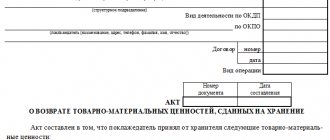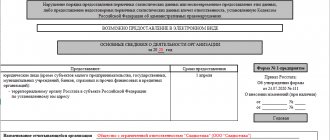- October 23, 2018
- Accounting
- Garfutdinova Svetlana
A contract for the purchase and sale of goods (provision of services, performance of work) must contain a payment condition. There are two main options - prepayment, payment after receiving the goods, signing the certificate of services performed or acceptance of the work performed. The remaining options are derivatives of the above, for example, in stages, in parts, and so on. But for all options, it is advisable to issue an invoice for payment.
In general, issuing an invoice for payment is not a mandatory action. Many companies skip it by presenting shipping documents for this purpose.
This is acceptable if there is a long-term contract between organizations based on constant deliveries and payment is provided after receipt of the goods (works, services). Then issuing an invoice for payment can be considered an optional action.
But, whatever the terms of the contract, it will be correct to issue an invoice in any case. We will tell you in detail how to issue an invoice for payment in our article.
Purpose and composition
Initially, the invoice did not have the same semantic load as the other document. Its main purpose was:
- provide the payer with details for transferring funds;
- confirm that the details belong to the supplier organization;
- indicate the subject of payment (goods, work, services), quantity, price, amount;
- certify all information with the signatures of responsible persons and the seal of the organization.
Subsequently, commercial relations became more developed, and the invoice for payment in some cases (for one-time transactions) began to serve as an agreement and contain all contractual terms.
What mandatory details should the invoice for payment contain, how to fill it out - let’s look at it in more detail.
First of all, there is no unified form. Organizations have the right to develop and approve by order of document flow their individual form containing the necessary information. But there are details that must be included in the invoice, and certain requirements are imposed on them.
The preparation of an invoice for payment is usually automated in an accounting program and consists of five parts:
- General information.
- Salesman.
- Buyer.
- Product part.
- Responsible persons, performer, full name, phone number.
Formation of primary accounting documentation
The rules for maintaining primary documentation allow for its compilation using independently developed or unified forms (Article 9 No. 402-FZ). But remember that only a document containing all the necessary details has legal force:
- Title of the document.
- Date of creation.
- The name of the organization or the name of the entrepreneur of the compiler.
- Contents of a document or business transaction.
- Natural and monetary indicators.
- Data of responsible persons.
- Signatures of the parties.
The primary forms that the organization uses are fixed in the accounting policies. In the process of work, there may be a need to update or supplement forms - this is also recorded in the accounting policy.
Let's look at the primary documents in more detail.
First part - general information
This part contains registration data:
- Name;
- number;
- date of;
- invoice payment deadline.
Pay attention to the last line.
Given the floating exchange rate of the Russian ruble against other currencies, the terms of delivery also change. Therefore, the seller has the right to specify the number of days during which the invoice is valid for payment.
The second part is supplier information
The second part consists of the following:
- Name of the supplier according to the statutory documents. This name must be indicated in the payment order. If it is incorrect, the bank will reject the transfer.
- Bank payment details of the supplier organization (detailed).
- Name of the shipper (provider of services, works). This detail is indicated if the payment is made to the parent organization, and the consignor is its structural unit.
The third part is buyer information
It contains information:
- The name of the payer, his registration data according to the constituent documents.
- Name of the consignee. As in the case of the seller, the payer may be the parent organization, and the recipient may be its separate division.
In this case, it is not necessary to provide the buyer’s bank details.
But if the contract specifies a specific bank and this is important for the seller, then the buyer’s bank details should be entered in accordance with the contract.
The fourth part is commodity
This part should reflect in detail all the characteristics of the product (work, service):
- Name;
- manufacturer of the product or its origin;
- labeling, article number, classification and other description of the product;
- quantity;
- Price without VAT;
- VAT rate and amount;
- total amount.
The product part is summarized by the total amount payable on the invoice in figures, words in rubles and kopecks.
If the seller uses a special tax regime, then the rate should be “0%” or “excluding VAT”. And complete the total amount payable with the words “VAT is not subject to.”
What is the difference between invoices for payment from LLC and individual entrepreneur
The sample received from the “private owner” has one signature. The LLC will issue a paper containing two “autographs” - the chief accountant and the director. Besides:
- Individual entrepreneurs indicate only full name, companies - the name recorded in the charter;
- The individual entrepreneur form contains only the TIN, the organization - TIN and KPP.
Read also: Is it possible to refuse an electronic work book?
There are no other fundamental differences.
Differences when issuing with VAT and without VAT
VAT payers show the tax amount separately.
If the supplier is exempt from the contribution due to the use of a special tax regime (simplified system, single tax, patent), then the VAT amount is not included when writing the document. However, the corresponding mark is still affixed. And the reason must be given. For example, under the simplified tax system it is written:
- for individual entrepreneurs - paragraph 2 of Article 346.11 of the Tax Code of Russia;
- organizations - paragraph 3 of this regulatory act.
Note: if a buyer operating under a preferential tax regime is issued an invoice with VAT, then the entire amount must be paid, but then o.
Fifth part - responsible persons and executor
Despite its apparent simplicity, this part should be taken seriously. It is the persons who signed the invoice for payment who will be responsible for the accuracy of the information and its compliance with the terms of the contract.
Often, distortion of information in the invoice leads to erroneous transfers of funds.
The details of the executor-employee who generated and issued the document and his direct telephone number are also necessary. There will be an opportunity to contact him if you have any questions, clarify existing information or obtain additional information.
After signing, you can say that the invoice for payment is completed.
Discharge procedure
If the terms of the contract require the buyer to make an advance payment, the invoice will be issued first. Based on it, the accountant will generate the entire package of documents for delivery. Namely, he will issue a delivery note, a delivery note from the warehouse, and an invoice.
If payment is made upon delivery of goods (performance of work, provision of services), then an invoice for payment is generated on the basis of shipping documents (the same package of documents as above).
All these papers are interconnected and usually have one serial number, which greatly simplifies the tracking and control of commodity transactions.
Some organizations use the invoice number as an internal coding for delivery transactions. The numbers and letters in it are not random, as it seems at first glance, but carry information about the batch of goods, the materially responsible person, the warehouse, and the like.
Bill of lading or sales receipt
Sales receipts are issued in two cases: when selling goods by individuals or when selling to individuals.
Invoices, as a rule, are used by organizations to document the sale of goods and their further receipt by the buyer.
Like the contract, the invoice is drawn up in two copies. One remains with the supplier to confirm the transfer of goods, and the second is received by the buyer to confirm receipt.
The data in the delivery note and invoice must match.
The person who releases the goods puts his personal signature and the company seal on the delivery note. And the buyer also certifies the document with a signature and seal.
Additional Information
At the discretion of the organization, the invoice may contain the following additional information:
Reason for display. It can be:
- contract for the supply of goods (works, services);
- buyer's request to reserve a consignment of goods;
- invoice for the delivery of goods;
- and others.
Conditions for receiving goods. For example:
- pickup;
- receipt from a transit warehouse;
- delivery of goods by the supplier to a specific address;
- and others.
If, according to the terms of the agreement, the invoice is issued in a foreign currency, and payment is required to be made in Russian rubles, then you can and should indicate which rate will be valid for payment.
You can specify how long the supplier guarantees the availability of the goods specified in the document.
If the reporting period ends, you can specify a specific end date for receipt of the goods by the buyer. Thereby preventing the presence of an advance from the buyer on the reporting date, which is necessarily reflected in the VAT return.
Useful features
Let’s briefly go through the features that we found especially convenient.
Upload signature and seal
A standard feature for accounting programs, especially convenient if you send invoices immediately to the client’s email. Of course, first you need to make a signature and scan it. If there is a problem with the picture, the support service is ready to solve the problem for a small fee.
Full document flow (contracts, invoices, acts, etc.)
In fact, self-employed people often only need to issue an invoice (and don't forget to issue a check from the MyTax app once the money arrives in the account!). But, as always, there is a nuance - the client’s accounting department may still insist on at least another certificate of work performed.
It would also be useful to conclude an agreement with regular customers, the form of which can be created right there in the application.
We advise you to go through all the forms and view the ones you need. In general, there are absolutely all the options that are used in small businesses: Invoices, Acts, Invoices (TORG-12), Invoices, Advance Invoices, UPD, Sberbank Receipts (PD-4), Payment orders, Cash receipts and expenses orders, Powers of Attorney for goods and materials (M2, M2a), as well as Agreements and Appendices thereto. If something is missing, then again the service developers are ready to create an exclusive form especially for you.
Counterparty database
It goes without saying, but still worth mentioning. Your clients’ data is securely stored in the service’s personal account, and when completing documents, you just need to select a client from an already created list. But due to the need to add new clients to the database, the following functions will not be superfluous.
Filling in TIN data
A very convenient function, especially if you were sent details in the form of a photograph or a scan of text (alas, this often happens). There is no need to enter all the numbers manually, which saves both time and nerves.
Classifiers and background information
BIC of banks, HS, currency codes, codes of countries and regions. In addition, you can find mass registration addresses and a database of mass founders of legal entities (aka nominee directors).
Here you can also get a free extract from the Unified State Register of Legal Entities (unified state register) for any legal entity you are interested in: Extract from the Unified State Register of Legal Entities of the Federal Tax Service This will at least help you make sure that such a company exists in principle, and at the same time check the date of its registration and the details of its managers.
Application area
Invoices for payment are mainly circulated between legal entities. They can be submitted either electronically, or via mobile or fax - the main thing is that the document is read clearly.
But what if the seller is an individual entrepreneur? Don’t get lost - all the details in this case will be the same. The requirements for issuing an invoice for payment are the same. And it will be signed by the individual entrepreneur himself in three persons - for himself, for the accountant and for the contractor.
There may be such an option - the buyer is an individual. How to be in this case? What to indicate? What will be the procedure for issuing an invoice for payment? In this case, data about the individual is entered - his full name, passport details, place of permanent registration, actual place of residence, telephone number and other necessary information.
How to fill it out correctly: examples
The table provides examples of correctly filling out all the details:
| Requisites | Filling example |
| Invoice number and issue date | Invoice for payment No. 1204 dated October 25, 2018. |
| Seller's name and details | IP Aleksandrov Dmitry Aleksandrovich, TIN 65663666377, 390939, Moscow region, Moscow, st. Lenina, house 13, office 5, tel. +7 (900) 111-11-11 |
| Recipient's name and details | Vasilevs LLC, TIN 658564743579957, checkpoint 5244771559, 390939, Moscow region, Moscow, st. Lenina, house 14 |
| Products or services | Legal consultation |
| Quantity | 1 |
| Total amount in words | Total items 1, amounting to one thousand five hundred rubles 00 kopecks |
| Bank details | Recipient bank: Sberbank of Russia OJSC Moscow, BIC 6785463, account No. 748632148, account No. 57845216931 |
| Signature | The individual entrepreneur signs the invoice personally |
If, instead of an individual entrepreneur, his authorized representative signs the account, then the details of the power of attorney are indicated next to him, which confirms his powers, as well as the position of the individual, full name and decoding.









